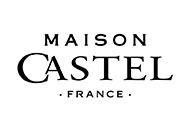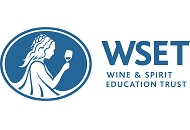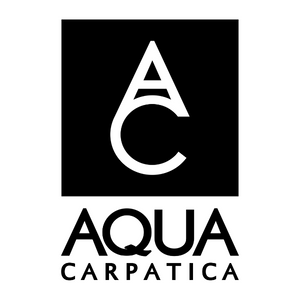I’m asking Tom Herrity, founder of Northern Virginia’s newest winery, to reflect on his dream of starting a wine business. As the first anniversary of the opening of his tasting room at Crimson Lane Vineyards approaches, the serial entrepreneur reflects on the things he learned after turning this site into a wine estate – with vineyards, winery and tasting room – and his home.
“Nothing has compared to the joy that I’ve experienced in doing this project,” Tom says. “It is full of wonder, and at 61 – which is how old I am – it’s just incredible. I’m very, very fortunate to be able to experience that.”
Tom and wife Deanna – an interior designer – spotted the site’s beauty in 2011, bought it in 2014 and started to plant vines on the south-facing slopes in 2016.
Owning this site near Linden in the Shenandoah Valley, with views of the Blue Ridge Mountains, is definitely one of the big positives from this venture. The property occupies 166 acres, with only 23.6 acres so far planted to vines. The vineyards have a 25-degree slope from an altitude of 1,450ft to 950ft, which in Virginia, Tom tells me, “is considered high elevation winemaking”.
Reflecting on his search for the right site, he reveals: “I looked all over the Northern Virginia area, looking for what I believed would be the best place to mitigate the reality of the Virginia climate and to give us a fair shake at growing premium wine grapes.”
The first vintage came in 2018 – the wine being made at Early Mountain Vineyards near Charlottesville until the Crimson Lane winery was completed in 2021. The sleek, modern and minimalist tasting room (below) opened in March 2023.






It’s the tasting room that dominates our conversation, especially when discussing the decisions that turned out to be spot on. Tom says: “The top things we got right are the reservations and table service – but not being dogmatic about people having bookings. I mean, if somebody walks up without a reservation, we don’t typically turn them away; we try to accommodate them. If you read reviews of vineyards that are reservation-only around here, they’re very harsh about the way they handle that, but we’re not.
“I also think our staffing has worked really well and I’m incredibly fortunate to have some very dedicated people who treat this almost like a family and it shows in the service.
“They want to come to work. It shows when they talk to guests, and the excitement that they have about the place just comes through.”
The hilltop tasting room is the first on the East Coast designed by lauded Napa Valley architect Howard Backen. It’s reminiscent of some Napa tasting rooms but is also rooted in the Linden area and invokes the rich farming history of Fauquier County. It's also just an hour from Washington, DC, the capital of the United States.
There are cozy sofas, tables, private spaces, and seats at the tasting bar. The views are of the rolling vineyards and the mountains. The atmosphere is relaxed. Groups are limited to six people. There are no weddings, children, dogs or party buses. Prices for tastings start at $45 per person.

“You walk in and it feels kind of like a Napa tasting room – but it’s got its own Virginia feel to it,” Tom (above) says. “Which is really what our goal was from a design perspective, to give somebody who typically in this market gets on a plane to taste wine. We wanted them to really give us a chance in Virginia, and encourage them to come out (from DC). The ambition for that project kind of grew to what it is today, which is, I think, a significant accomplishment for Virginia in particular, and for the mid-Atlantic states in general.
“After we found that we really could ripen the fruit and we could produce the kind of wines that we are right now, so the ambition for the tasting room grew as we thought we had something really special here and could create something really special for this region. And I think if you read our reviews and take a look at some of the things that people say about us, there are a lot of people saying we’ve checked every box.”
'The response has been very, very good'He continues: “We provide a leisurely tasting experience, where there’s typically 10 minutes between pours to give people the opportunity to enjoy food, and to allow us to really talk about the wines and about who we are. Like the reservation-only tableside service, this is not something you typically get in Virginia, and the response has been very, very good. We don’t allow children or pets. And people have appreciated that too.
“The reason I’m in this business is I fell in love with Virginia viticulture, I fell in love with Virginia wineries, and just the entire experience. But what I didn’t like is, you know, on a nice spring day going out and having to elbow my way to the front of the tasting room bar and try to have anybody pay attention to me. And then not really have anybody behind the counter who’s able to answer any question you have, even how many acres they have under vine. We provide a much more in-depth experience.”
Tastings are conducted by “people who are incredibly passionate about what they do. And that comes across when they’re talking to people”.

Another thing he got right is the positioning of the solar panels. They are not on the roof of the winery (above); they are at the back of the winery, on the ground near the car park – so it’s one of the first things visitors see.
“This is the solar for my home,” Tom points out. “Our goal is to double what we have and get to net zero at the tasting room. I think I’m getting about 50%. I had to specifically put it in the back of the building, but close enough to the parking lot so everybody gets to see it, because I think it’s something that I want to show off. I want people to see it. We also have electric (vehicle) chargers here, which we built in, which seemed like the right thing to do.”
Tom has also purchased a Ford F-150 Lightning all-electric truck which he’s modifying to use as a back-up power source if there’s an outage in the tasting room.
But, he tells me, he’s “very, very careful” about pushing his green credentials because “we still have diesel tractors and a number of other things that make us less green. But I am concentrating on lowering bottle weight, and we just went foil free because I think that’s a waste of money and it’s not very environmentally sensitive.”

Tom and Deanna live on the property – which was another good decision they made. “People said, why don’t you do weddings, why don’t you do private events? And I said, the greatest thing about this place is, unlike the restaurant business, which at six o’clock you’re just getting started, at six o’clock this place turns back into my home. And I get to enjoy this property.
“We go to the top of the hill, which has got a fantastic view during sunset and summer. My wife calls it magic time. And when the sun sets on the mountains on the other side of the valley, it’s just beautiful. And so, yeah, this is where I tell people I’d like to have my wake, in the tasting room. It’s someplace where I would like to ride out into the sunset. I hope I’m fortunate enough to do that.”
The thing he got wrong
The main call he got wrong, he reveals, is not planting enough Albariño! He believes it could become Northern Virginia’s flagship white grape.“It’s forgiving, it grows well, it wants to please,” Tom says, summing up the attributes of the Galician grape. “I think we’re still in search of a white variety in Virginia. We went through a period of time when they thought Viognier was going to be it: it grows well here until it doesn’t. And then people thought Petit Manseng was going to be it. It’s a tricky thing, particularly at the end of the season.”
But Albariño performs well and the tasting room visitors love it. “We can’t keep it on the shelf – it’s the favourite varietal and I like to tell people it’s one of the biggest mistakes I made. We planted it at the same time as we planted Sauvignon Blanc. And Dominick Fioresi (Deanna’s winemaking brother) said, ‘I want to do two acres of Albariño‘. And I said, ‘No, let’s do two acres of Sauvignon Blanc and one acre of Albariño’. And it was a big mistake, because we just can’t keep it in stock.”
The other grape varieties here include Chardonnay, Nebbiolo, Petit Verdot, Syrah, Cabernet Sauvignon, Cabernet Franc, and Merlot.
Is having such a diverse range of grapes another possible mistake, I wonder? “We didn’t just go in and plant – we did a lot of homework first,” Tom reassures me. The soil mapping was supervised by viticulture consultant Lucie Morton.
“The varietals chosen were based upon a combination of what we thought would grow well, and the history that that varietal had in Virginia. And then a little bit towards what we thought the market would be receptive to.”
They planted the Nebbiolo for Dominick and Deanna, who have Italian heritage, and Syrah for Tom, who’s a fan of Rhone wines but realised Grenache wouldn’t grow so well here in Virginia.
Tom explains the passion projects: “We have two small plantings, one of Syrah and one of Nebbiolo. They make delightful wines. But they’re finicky. Nebbiolo tends to bud out even before Chardonnay in Virginia. It grows these great shoots, but, if you have any cold event, they get zapped. And it doesn’t push out any fruitful secondary. And so you basically go the rest of the season staring at canopy and having to take care of it without getting any fruit, which is difficult.
‘It’s time to have some fun’“Syrah produces an incredible wine in Virginia. A lot of people say it’s finicky and it’s not suited for Virginia, but we haven’t felt that at all. It’s not as cold hardy, particularly when it’s young, but if you’re able to get it into its third or fourth leaf, it produces an incredible wine. It’s not something that I’d like to bet the spreadsheet on, either one of these varietals, but we’re going to increase the plantings because it’s kind of time to have some fun. We’re gonna plant probably two acres each of those now that we’re up and on a plane.
“We just did a ’21 bottling of the Syrah – it’s really going to be a great wine. And we have enough volume to share with our wine club this year.”
They are going to plant more Nebbiolo and Syrah in 2025. They have seven acres identified for planting – five of which are earmarked for Cabernet Sauvignon. They have another 20 where they have mapped the soil but not cleared the land. Tom is reluctant to overstretch the business. “I don’t want this to get out of control,” he says. “I don’t want to take over the world… There’s joy in keeping this relatively fixed. I think 5-6,000 cases feels right to me. And if I planted more, I’d have to go beyond that. And I’m not sure I want to.”
But he never says never.
Decisions to be made

With such small volumes of estate-grown fruit and a growing reputation for wine and wine tourism, Tom and his team must keep a careful eye on their stock levels.
As he says: “You know, most people worry about having too much wine; we worry about having too little. We started by pouring seven wines, which, for a tasting experience, is a lot. We looked at where we were going, and we were just going through too much wine. And we weren’t going to have enough. One of my greatest fears is not being able to deliver, just run out. Shutting down for the winter was a possibility, but I needed to keep people employed full-time. So, what we’ve done is, we’ve moved to a tasting of five wines and we start with a sparkling wine that’s made by another Virginia producer… He deserves to be better known for what he does and he doesn’t have a tasting room, so we pour his sparkling first. It’s an elegant way to start a tasting. It’s not our wine, but it also helps us preserve inventory. Then we pour three whites, one red.
“We’ve also put some capacity controls on some people’s ability to purchase some of our lines, just to make sure that we don’t run out.”
When Crimson Lane’s tasting room opened, Tom wasn’t confident anyone would show up. “Until the first person drove up the driveway, actually got out of their car and walked into the tasting room, I couldn’t believe that people would actually come. And I think there’s something inside of me that said, I had to overproduce and overdeliver. And so we had a whole lot of a good thing and we just had to figure out how to dial everything back.”
'We just had to figure out how to dial everything back'Making decisions and ‘pivoting’ if they are not right is one of the secrets of Tom’s success as an entrepreneur who has moved from public affairs to software to running a call centre business in Mexico alongside a wine business.
“One of the two greatest things that I’ve learned in business is always pivot,” he advises. “If something isn’t working, don’t drive it into the ground, understand what isn’t working and change it. And the other great thing I learned is just never give up.
“Our first harvest in 2018 followed record rainfall in Virginia. But we produced a red wine that year, because we weren’t going to not produce a red wine. It was a 12% red wine. Phenologically, it was ripe, but it was not the wine we wanted to produce. But we were proud of having produced it, and we called it Prelude. It’s some people’s favourite wine. Thank God it was done.”
Tom concludes our video call by summing up the past year: “We did a lot of things right; we did some things wrong. But pivoting is something I’ve done in business my entire life, and it’s one of the secrets to my success. So we’re changing what we need to change, and we’re keeping what has really worked well. But, generally, we’re very satisfied with the response that we’ve gotten. The market really is appreciating what we’re doing.”

 English
English French
French










.png)
